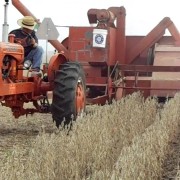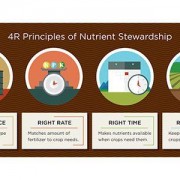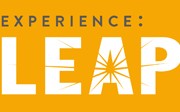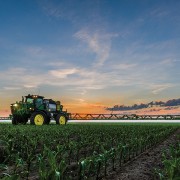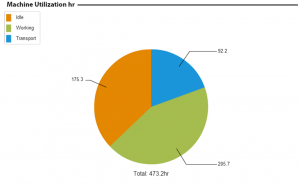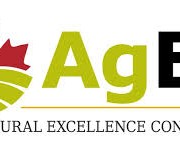Social License and Its Impact on Farming
Last week at our local CAFA chapter meeting was the second time I got to hear a presentation from Shelley Jones. Shelley is the Manager of Agriculture Awareness with the Saskatchewan Ministry of Agriculture. Her topic, both times, was Social License. Social License is becoming as much of a buzz word in agriculture as it is becoming a major issue not to be ignored. I’ve blogged in the past (a couple years ago now) about how I feel that agriculture is “under attack” from well funded activists and industries whose gain would come at the expense of conventional agriculture. While I hoped that the activism was a fad that might fade away, clearly it hasn’t; we as players in this most remarkable and diverse industry need to understand the impact of social license, recognize our role in the discussion, and enthusiastically take action.
We in agriculture are not alone. The oil & gas industry and the coal industry, among others, are also under attack. Those industries are putting together plans of action to deal with the activism. Sadly, it seems none of us were prepared for this ahead of time, and now feel like we have to “catch up” in getting our message out.
We had a great discussion at CAFA during Shelley’s presentation. Opinions were varied. One in particular suggested that we as farmers need to take that nobility we so proudly hold and check it at the door. The mind set that we “feed the world” and the never-ending gratitude that we are entitled to because of it is actually causing us harm, said this one opinion. His point is well taken: the consumer hasn’t always been our focus because we know we produce safe quality food. We know we farm in the most sustainable manner we can. Isn’t that clear to everyone? Why would the consumer put up any resistance?
What we’ve forgotten, or maybe it is that we just haven’t taken notice, is that our population is no longer ag focused. It was said today in the meeting that “years ago, no one planned any major events in May or late August through October because of seeding and harvest respectively. Now, there is little concern to planning weddings or vacations during those times because fewer people are affected; a wedding on September long weekend might only exclude one family from the long list of guests.” Translation: fewer people are farming.
Of course we know that fewer people are farming today than 10 years ago, than 20 years ago, etc. And while we feel we’ve reacted to that trend by farming more acres and increasing yields, what we haven’t done is anticipated how severe the disconnect between John Q. Public and primary food production actually would become. The average non-farming person has almost no clue where food comes from or how it is grown.
In fact, most still sadly believe:
- that farmers are overall wearing, pitchfork carrying, laborious people;
- that the proverbial “little red barn” and an open tractor are normal;
- that any farm that is bigger than said red barn and open tractor must be a “corporate farm” owned by some large eastern Canadian corporation or a US conglomerate;
- that chocolate milk comes from brown cows.
How did this happen? How did our society swing from a primarily agricultural base to what it is today? Without getting onto a tangent of socio-economic trends, which have been debated feverishly through the 80’s and 90’s, what I’m really asking is “How did such a disconnect come about?”
It comes from taking things for granted for too long. Farmers took for granted that they were trusted, that they produced safe food in a sustainable fashion. Non-farmers took for granted that the food they purchased from their grocery stores was abundant, safe, and cheap. The internet has changed all of that by giving a platform to activists.
I felt so completely naive over the winter when on the agenda at a conference I was attending was a man who’s business it was to lobby the federal government. Wait, lobbyists are for hire? They’re not just people with conviction and a drive to change something they passionately believe in? Nope. You can hire a lobbyist. You can hire a person or firm to grind on the government, get face time in the media, and generally cause a ruckus…all for a fee, of course. These lobbyists, or activitsts as it were, represent their employer, the entity that hired them to promote a specific agenda. Fact, rationale, residual effects begone! These activists don’t need to be in Ottawa, or any provincial capital. They have the internet; where anyone can be a celebrity, spew rants of blatant falsehoods with an abundance of sensationalism to garner enough of a following that uninformed people simply believe that “it must be true.”
Combine this with how it is common among marketers to no longer promote what the consumer wants, but to promote what the consumer doesn’t yet know he wants, and we have a perfect storm. Consider technology and gadgets. Before HD television, did any of us know we wanted a 720p or a 1080p or now a 4K television? I still don’t know what the hell any of those are, but darn it all, the consumer now expects it! Did the electronics manufacturers build a few 4K TVs first to see how they’d sell, or did they go full out into producing 4K TVs and let the marketing look after creating a demand? We all know it is the latter.
Back to farming, we now have well funded activists with a platform that knows no bounds, who are free to generate as many half-truths, cherry-picked facts, and blatant falsehoods as they like in order to advance their agenda. Do they give a rat’s keester about how it affects you, your family, your community, or your industry? Nope. I believe that you or I do not matter to these activists. They don’t care one iota how you farm or if you’re still farming next year. They are only here to stir up a ruckus and gather “followers,” uninformed people who latch on to these revocable fallacies, minions who are intended to carry the momentum that the activists have started. Poor sheeple, if only they knew they were nothing more than pawns in a game.
The danger really comes into focus as the sheeple begin to do the activist’s work for them, shouting their “truth” from the rooftops and gaining more followers and momentum, convincing other people to “vote with their wallet.” I vote with my wallet regularly in how and where I chose to spend my money. We’ve been groomed to live by the old adage that “the customer is always right.” But, what about when they’re not?
Readers who have followed my writing have read it several times and will continue to for a while yet: you don’t know what you don’t know. These consumers don’t know what actually happens on your farm, in your pastures, or in your barns. They get their education from the University of Google where facts are not checked and reality is whatever you want to believe.
Are these activists, and their loyal followers, getting in front of legislators? Yup.
Will they influence future laws and regulations that will affect how you run your business? They might – – they’re sure trying!
Does getting into a fight with any of them online help? Nope.
What “we” can do in this has been well documented already in many different places. Farm & Food Care Saskatchewan is a great place to start: https://farmfoodcaresk.org/. There is also Farm & Foodcare Ontario: http://www.farmfoodcare.org/ Both of these entities are focused on informing the consumer and would benefit from your volunteerism. If you haven’t yet watched License to Farm, do it soon: http://licensetofarm.com/. The list of “to-do’s” for what you can do in this situation does not need any additions from me.
Direct Questions
How would your farm be different if the laws forbade you from using certain (or all) pesticides on your crops, certain (or all) vaccines on your livestock, or mandated how and when you managed your production?
We talk regularly about financial risk in these articles. You consider market & production risk regularly. Currency risk and interest rate risk will become more dominant in future conversations. How will socio-economic risk affect your farm?
From The Home Quarter
One of the greatest benefits of farming is the independence, the connection with the land, and contributing to society in a way that few others can. For any of us to think that the independence we enjoy, and maybe even take for granted, is safe for us and our future generations is a bit naive. There are major factors at play, any or all of which could affect your future in this dilemma we call social license. You, me, and everyone in the industry can step up and make a positive impact. Or, we can take our way of life for granted and risk getting trampled by a stampede of sheeple.

